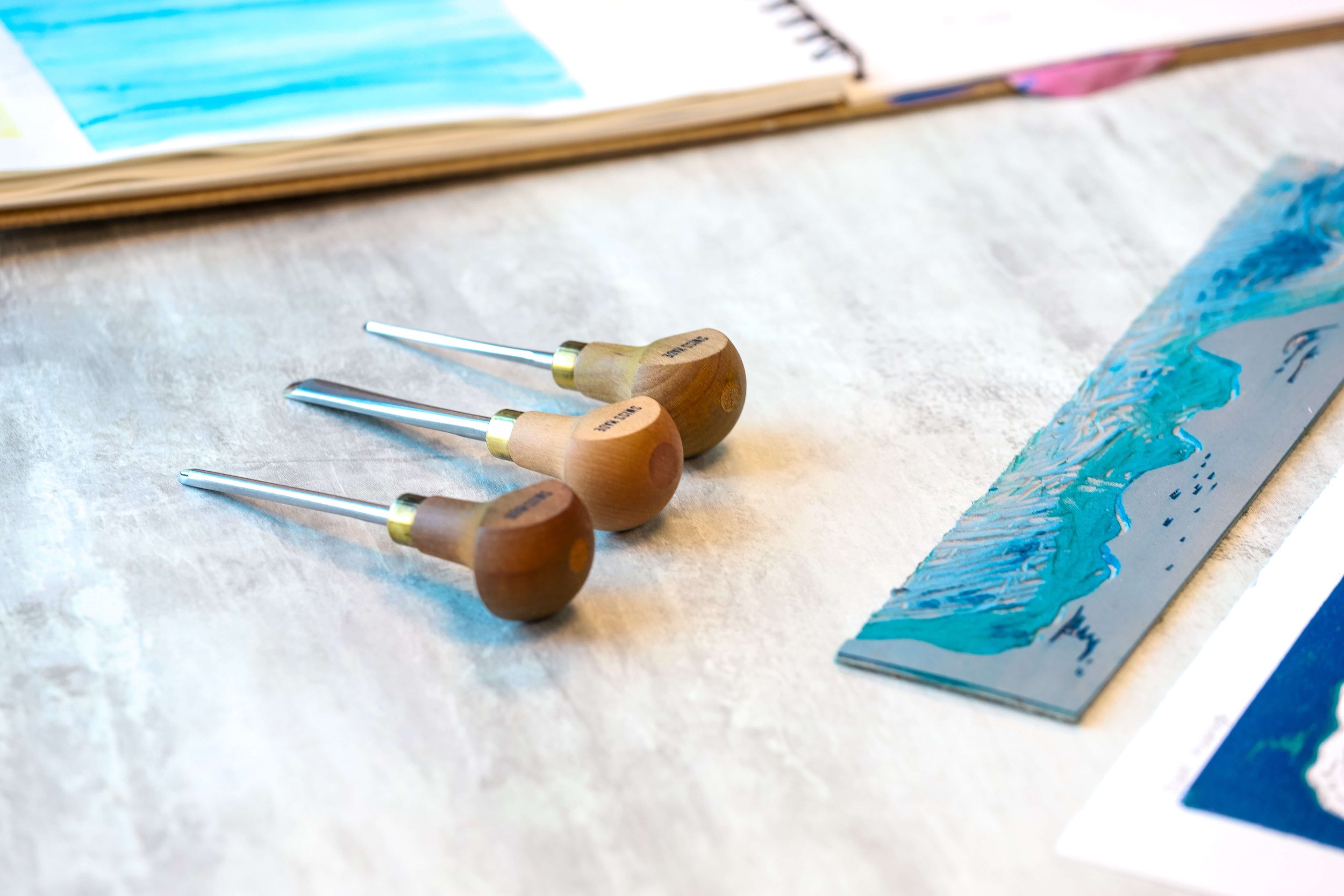Keeping It Kind: Minimising My Business' Impact on the Environment
On the face of it, art could be considered a pretty wasteful occupation however, I aim to operate low waste systems.
I do this by recycling test prints and misprints into collages and cleaning my tools using vegetable oil rather than harsh chemicals as well as being very careful about the materials that I choose in the first place.
My prints are designed to last - I’m not into fast fashion and wasteful interiors. Find out more below.
Paper Choice
Let me tell you about the archival quality papers that I use.
My paper of choice is Fabriano Unica. Made with 50% cotton, this acid free paper holds the ink well and is non porous so that the ink remains on the surface as vivid as it is on the palette. It is flexible so it can be pressed and peeled back without weakening, which also means it will stand the test of time - even more so when framed properly.
The traditional paper making process employed by the Fabriano paper makers uses animal gelatine to add the strength and waterproofing and the texture created by the cotton element of the mix provides a luxury feel.
Combined with the inks I detail below, these papers produce a high end finish that will see the print become a treasured family heirloom.
Inks
It matters to me that the inks I use are both high quality and kind on the environemnt.
I use Cranfield Colours relief inks because that’s what they offer and I'm sure you'll agree that they have the most amazing pigments that result in gorgeous colours.
But that's not all...
🦚Caligo safe wash inks are non toxic in accordance with the ACMI “Approved Product” (AP) seal.
🦚Cranfield carefully audit their supply chain so they know exactly where each ingredient comes from.
🦚The colours are vegan friendly with the exception of the metallics which contain <1% tallow.
Collage
In between big projects and commissions you’ll find me in my studio playing around with some papers that I’ve inked up with what’s been left on the palette.
Rather than wash it all down the sink, I’ve gotten into the habit of spreading the leftover ink on odd shaped paper offcuts and using them to create something else.
Sometimes I combine these papers with bits of test prints too. It’s a good way to loosen up and reduce waste.
Cleaning
Using oil based inks produces gorgeous colour but it can make cleaning up more problematic.
Where I have put too much ink on the plate, I scrape back most of it and put it back in the pot (pure colours) or add in the a lined tub to use at a later date. Then I get to cleaning the rest up.
A lot of printmakers use solvents to clean up their inks but not me. I don't like the smell or the thought of what all those chemicals do once they're washed down the drain.
Instead, I use vegetable oil to loosen the ink then wipe it away with a sponge and paper towel. After that I degrease with washing up liquid leaving my surface ready to use again.
If there's any residue left behind after drying, I buff it away with old muslin cloths left from when my daughter was a baby.





